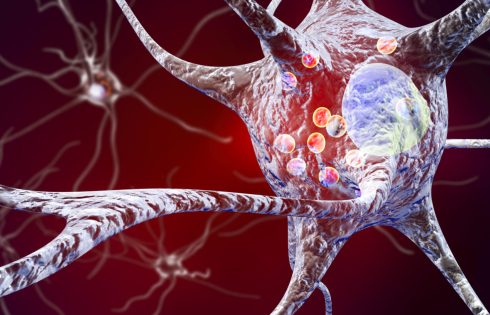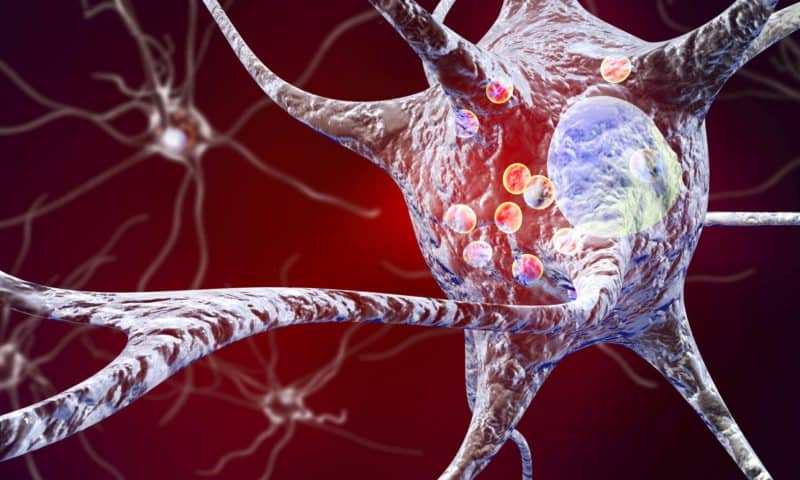
Researchers at Wuhan University have discovered a cholesterol metabolite that may play a critical role in the development of Parkinson’s disease (PD). Studies in mice, led by Zhentao Zhang, MD, PhD, indicated that the metabolite, 24-hydroxycholesterol (24-OHC), promotes the spread of Lewy bodies and the death of dopaminergic neurons in the brain, the two major hallmarks of Parkinson’s disease. 24-OHC is produced from cholesterol by the actions of an enzyme, cholesterol 24-hydroxylase (CYP46A1), and the researchers suggest that blocking the activity of 24-OHC or preventing the metabolite from being produced could potentially represent effective strategies for treating Parkinson’s disease.
Zhang and colleagues reported on their findings in PLOS Biology, in a paper titled, “The cholesterol 24-hydroxylase CYP46A1 promotes α-synuclein pathology in Parkinson’s disease.”
PD is the second most common neurodegenerative disease, and leads to slowness of movement, tremor, rigidity, cognitive impairment, and neuropsychiatric symptoms, the authors explained. The disease is characterized by the formation of Lewy bodies composed of aggregates of α-synuclein (α-Syn), and death of dopaminergic neurons in the substantia nigra.
“Converging lines of evidence indicate that α-Syn fibrils can spread in a prion-like manner in the brain, leading to self-propagation and cell-to-cell transmission of protein aggregate,” the investigators stated. “Although it is clear that α-Syn aggregation underlies the pathology of PD, what drives the spread of α-Syn remains unclear.”
Their newly reported study was designed to investigate what causes the spread of pathological α-Syn, with the authors hypothesizing that the culprit is the cholesterol metabolite 24-OHC, which is known to present at high levels in the brains of people with Parkinson’s disease, and which increases with age. “Various types of clinical evidence indicate that the levels of 24-OHC in the cerebral spinal fluid (CSF) are increased in PD patients and are correlated with the duration of the disease,” they wrote, also commenting that “previous studies demonstrate cholesterol 24-hydroxylase (CYP46A1) increases the risk for PD.”
Through their study, the team first confirmed that 24-OHC levels were higher in the blood of patients with Parkinson’s disease as well as in a mouse model of the disease. The results, they wrote, “… suggest that both CYP46A1 and 24-OHC increase in an age-dependent manner and are elevated in PD patients, PD model mice, and aged wild-type mice.”
The researchers then blocked 24-OHC production in the mouse model by knocking out the CYP46A1 enzyme. This reduced both the spread of the harmful α-Syn fibers and damage to the dopamine neurons in the critical part of the brain. “… CYP46A1 knockdown relieves the spread of α-Syn pathology and the loss of dopaminergic neurons,” they commented.
Further experiments with neurons cultured in a dish showed that the addition of 24-OHC caused normal α-Syn to change into harmful α-Syn fibers. Injecting mice with these fibers led to a greater spread of Lewy bodies, more dopaminergic neuron degeneration, and greater motor deficits than did injecting them with α-Syn fibers formed in the absence of 24-OHC. The researchers suggested that drugs that prevent cholesterol from being converted to 24-OHC might therefore be an effective treatment for the disease.
The authors suggest that their findings “… indicate that the cholesterol 24-hydroxylase CYP46A1 plays a pivotal role in the progression of α-synuclein pathology in Parkinson’s disease, highlighting its potential as a therapeutic target for Parkinson’s disease.” In their report, they further stated, “It will be interesting to determine whether CYP46A1 and 24-OHC can serve as theranostic biomarkers for disease-modifying therapies.”

